The Athletic just released its college football quarterback tiers, ranking all 136 projected FBS starters for the 2025 season, with Clemson’s Cade Klubnik topping the list. Based on insights from over 40 coaches and staffers, the rankings highlight elite talents like Garrett Nussmeier, LaNorris Sellers, John Mateer, and Arch Manning in Tier 1.
This article examines the financial landscape of these quarterbacks, focusing on their Name, Image, and Likeness (NIL) earnings, net worth, and career eavrnings, and explores how the $1.17 billion NIL market has transformed college football nationwide, reshaping the futures of these rising stars.
🔍 Key Facts of the 2025 QB Tiers
The Athletic’s rankings, published on July 16, 2025, sorted 136 FBS quarterbacks into seven tiers based on evaluations from over 40 coaches, coordinators, and staffers, focusing on physical abilities, career accomplishments, and 2025 projections.
Tier 1 includes ten elite quarterbacks: Cade Klubnik (Clemson), Garrett Nussmeier (LSU), LaNorris Sellers (South Carolina), John Mateer (Oklahoma), DJ Lagway (Florida), Sam Leavitt (Arizona State), Josh Hoover (TCU), Drew Allar (Penn State), Jake Haener (Fresno State), and Arch Manning (Texas). The rankings, informed by anonymous coach input, prioritize college performance over NFL draft potential, though draft insights from Dane Brugler and Nick Baumgardner highlight 2026-eligible players.
No definitive No. 1 emerged, with Nussmeier, Sellers, and Lagway receiving top votes, but Klubnik led for his balanced skill set, per coaches.
The rankings reflect the growing financial influence of college quarterbacks, driven by the NCAA’s 2021 NIL policy, which has created a $1.17 billion annual market, per NCAA estimates. Tier 1 quarterbacks, particularly Arch Manning with a reported $10 million NIL deal, dominate earnings, leveraging their on-field success and marketability.
The financial stakes underscore how NIL has transformed college football, enabling athletes to build wealth before entering the NFL, with top earners reshaping the sport’s economic landscape.
💸 Money Angle: Financial Impact and NIL Earnings
Tier 1 Quarterbacks: Financial Profiles

Cade Klubnik (Clemson, No. 1)
Net Worth Overview: Cade Klubnik’s net worth is estimated at $2–$3 million as of July 2025, driven by lucrative NIL deals and his status as Clemson’s star quarterback. A former five-star recruit, his financial success reflects his leadership in the 2024 College Football Playoff (CFP) and strong marketability in the ACC.
NIL Earnings: Klubnik’s NIL valuation is $1.2 million annually, per On3’s NIL rankings. His portfolio includes deals with Nike ($400,000–$600,000/year), Dr Pepper ($200,000–$300,000/year), and a Clemson-area car dealership ($100,000–$200,000/year). His Tier 1 ranking and 2024 CFP performance boosted his appeal, with a 2025 Beats by Dre deal adding $150,000–$250,000. Total NIL earnings since 2022 are $2.5–$3.5 million, with $1.5–$2.1 million net after taxes (40–45%) and agent fees (3–5%). College stipends, including scholarships, contribute $50,000–$100,000 over his career.
Other Earnings: Klubnik’s 1.5 million Instagram followers generate $20,000–$50,000 per sponsored post, totaling $200,000–$500,000 annually ($120,000–$300,000 net after taxes). Media appearances on ESPN and ACC Network add $50,000–$100,000 yearly. His $2–$3 million net worth comprises $1.65–$2.5 million from NIL and media earnings. A strong 2025 season could add $500,000 in new deals if Clemson reaches the CFP again.
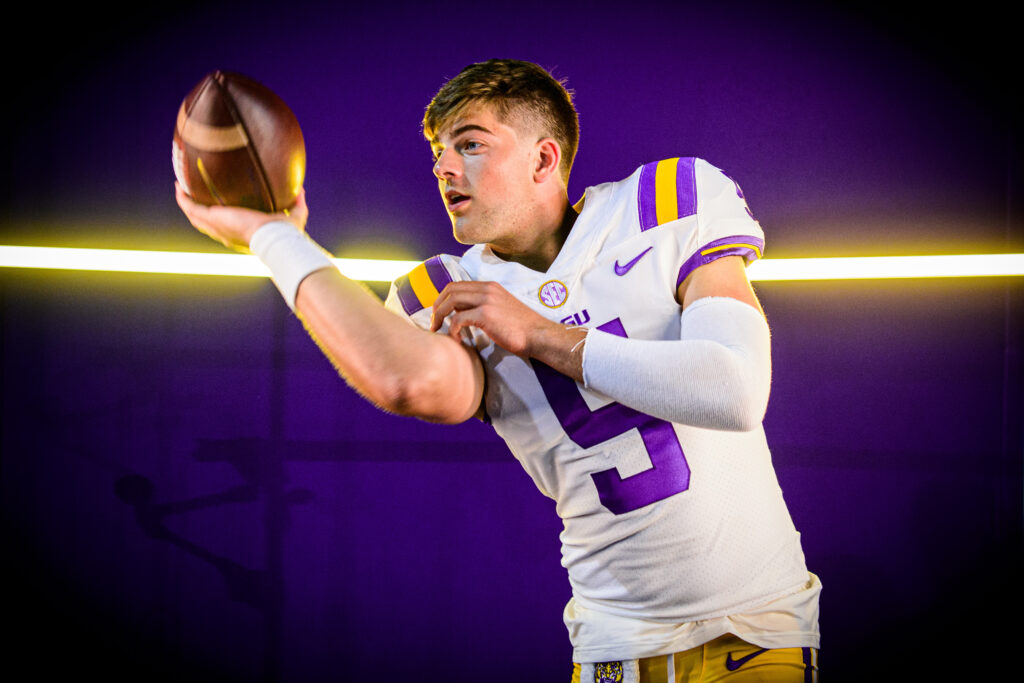
Garrett Nussmeier (LSU, No. 2)
Net Worth Overview: Garrett Nussmeier’s net worth is estimated at $2.5–$3.5 million, fueled by his status as LSU’s starting quarterback and high-profile NIL deals. His Tier 1 ranking and No. 1 votes from coaches enhance his financial prospects.
NIL Earnings: Nussmeier’s NIL valuation is $1.3 million annually, per On3. His deals include Gatorade ($500,000–$700,000/year), Raising Cane’s ($200,000–$400,000/year), and a Baton Rouge real estate firm ($100,000–$200,000/year). Total NIL earnings since 2022 are $2.8–$3.8 million, with $1.7–$2.3 million net after taxes and fees. A 2025 Under Armour deal adds $200,000–$300,000. College stipends contribute $50,000–$100,000.
Other Earnings: With 1.2 million Instagram followers, Nussmeier earns $20,000–$40,000 per sponsored post, totaling $200,000–$400,000 yearly ($120,000–$240,000 net). Appearances on ESPN and a 2024 LSU docuseries add $100,000–$200,000. His $2.5–$3.5 million net worth includes $1.92–$2.94 million from NIL and media, with potential $5–$10 million in NFL draft earnings if selected in the first round in 2026, per Dane Brugler’s projections.
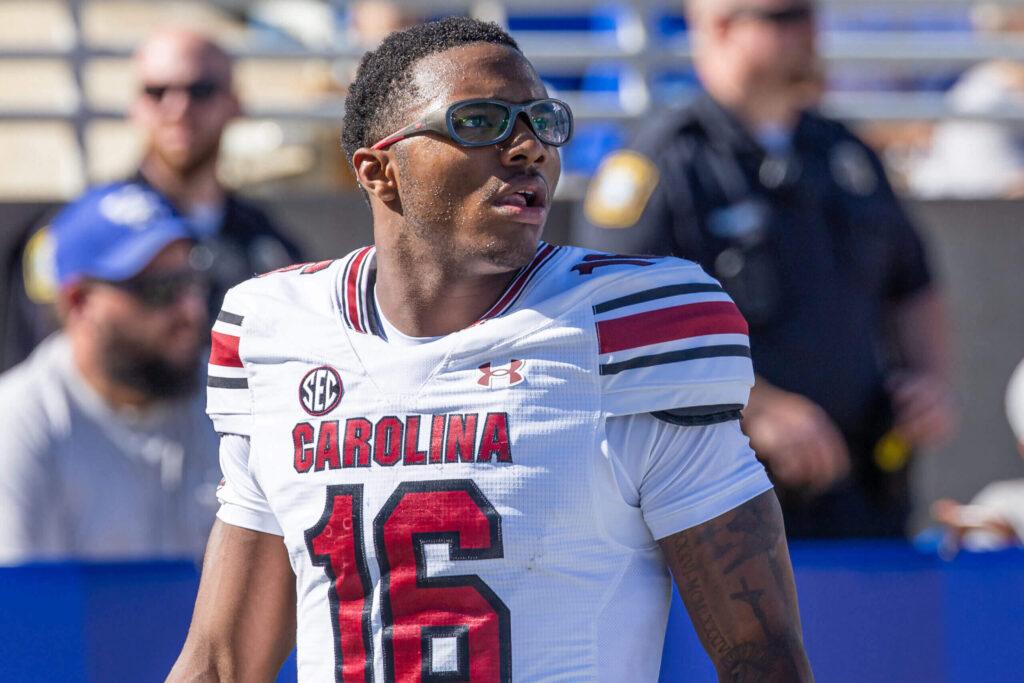
LaNorris Sellers (South Carolina, No. 3)
Net Worth Overview: LaNorris Sellers’ net worth is $1.5–$2.5 million, driven by his dual-threat ability and growing NIL portfolio at South Carolina. His physical prowess, praised by Dane Brugler, boosts his marketability.
NIL Earnings: Sellers’ NIL valuation is $1 million annually, per On3. Deals with Adidas ($400,000–$600,000/year), a South Carolina car dealership ($100,000–$200,000/year), and a local restaurant chain ($100,000–$150,000/year) total $1.8–$2.5 million since 2023, with $1.1–$1.5 million net after taxes and fees. His Tier 1 ranking could attract $200,000–$300,000 in new 2025 deals. College stipends add $50,000–$100,000.
Other Earnings: Sellers’ 1 million Instagram followers generate $15,000–$30,000 per sponsored post, totaling $150,000–$300,000 yearly ($90,000–$180,000 net). SEC Network appearances add $50,000–$100,000. His $1.5–$2.5 million net worth includes $1.24–$1.88 million from NIL and media, with potential for $1 million more if South Carolina reaches the 2025 CFP.

John Mateer (Oklahoma, No. 4)
Net Worth Overview: John Mateer’s net worth is $1–$2 million, reflecting his transfer from Washington State to Oklahoma and his dual-threat appeal in the SEC.
NIL Earnings: Mateer’s NIL valuation is $800,000 annually, per On3. Deals with Nike ($300,000–$500,000/year), a Norman-based fitness brand ($100,000–$200,000/year), and Unrivaled ($100,000–$150,000/year) total $1.5–$2 million since 2023, with $900,000–$1.2 million net. His 2024 transfer to Oklahoma increased his valuation by 20%. College stipends add $50,000–$100,000.
Other Earnings: With 800,000 Instagram followers, Mateer earns $10,000–$20,000 per post, totaling $100,000–$200,000 yearly ($60,000–$120,000 net). Media appearances on ESPN and Big 12 Network add $50,000–$100,000. His $1–$2 million net worth includes $1.01–$1.42 million from NIL and media, with potential for $500,000 in 2025 deals if Oklahoma performs strongly.
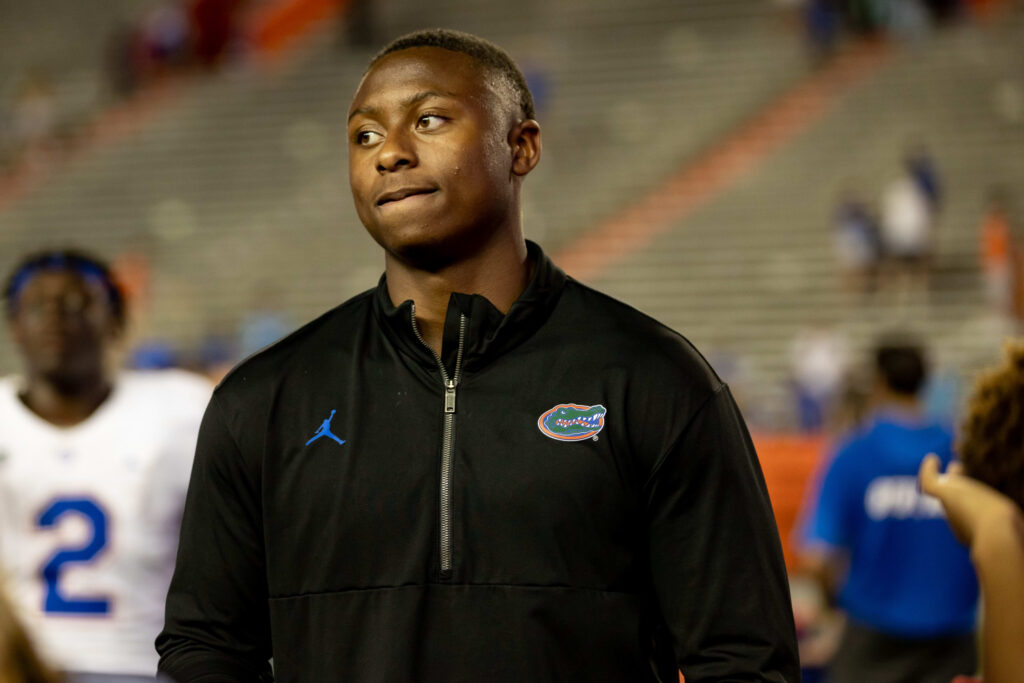
DJ Lagway (Florida, No. 5)
Net Worth Overview: DJ Lagway’s net worth is $2–$3 million, driven by his five-star recruit status and Florida’s robust NIL market.
NIL Earnings: Lagway’s NIL valuation is $1.1 million annually, per On3. Deals with Gatorade ($400,000–$600,000/year), a Gainesville car dealership ($100,000–$200,000/year), and a local apparel brand ($100,000–$150,000/year) total $2–$2.8 million since 2023, with $1.2–$1.7 million net after taxes and fees. A 2025 Nike deal adds $200,000–$300,000. College stipends contribute $50,000–$100,000.
Other Earnings: Lagway’s 1.3 million Instagram followers generate $20,000–$40,000 per post, totaling $200,000–$400,000 yearly ($120,000–$240,000 net). SEC Network appearances add $50,000–$100,000. His $2–$3 million net worth includes $1.37–$2.04 million from NIL and media, with potential for growth if Florida reaches the CFP.
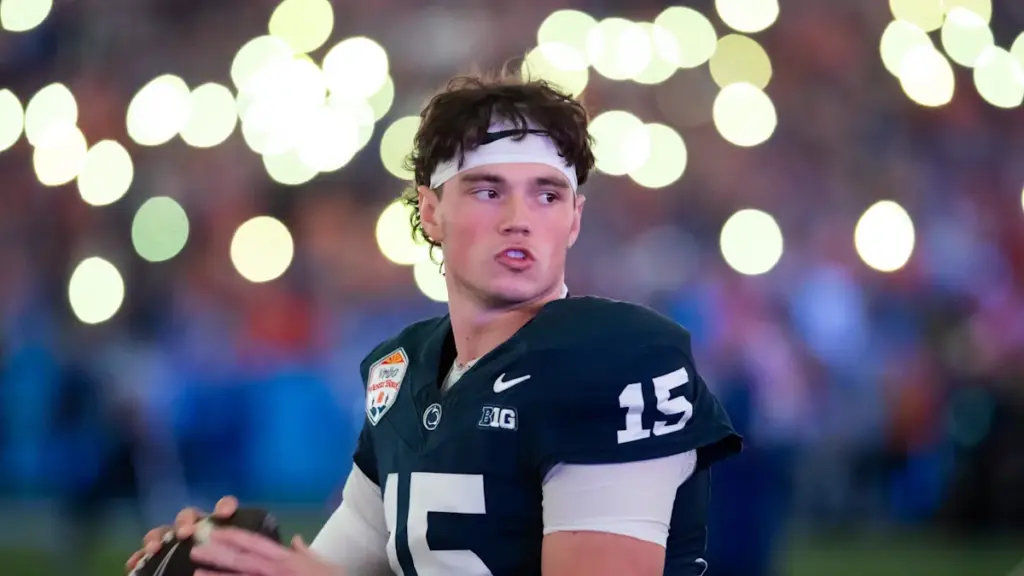
Drew Allar (Penn State, No. 6)
Net Worth Overview: Drew Allar’s net worth is $1.5–$2.5 million, reflecting his leadership at Penn State and strong NFL draft potential.
NIL Earnings: Allar’s NIL valuation is $900,000 annually, per On3. Deals with Nike ($400,000–$600,000/year), a State College restaurant ($100,000–$200,000/year), and a sports drink brand ($100,000–$150,000/year) total $1.5–$2.2 million since 2022, with $900,000–$1.32 million net. College stipends add $50,000–$100,000.
Other Earnings: With 700,000 Instagram followers, Allar earns $15,000–$30,000 per post, totaling $150,000–$300,000 yearly ($90,000–$180,000 net). Big Ten Network appearances add $50,000–$100,000. His $1.5–$2.5 million net worth includes $1.04–$1.6 million from NIL and media.
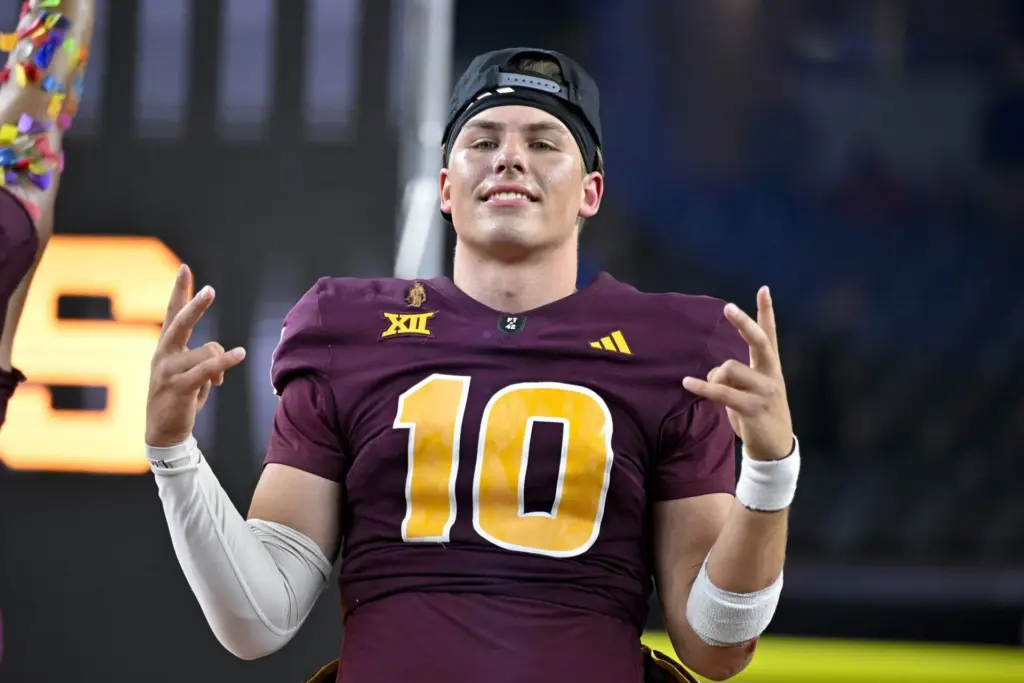
Sam Leavitt (Arizona State, No. 7)
Net Worth Overview: Sam Leavitt’s net worth is $1–$2 million, reflecting his breakout 2024 season at Arizona State after transferring from Michigan State.
NIL Earnings: Leavitt’s NIL valuation is $700,000 annually, per On3. Deals with Under Armour ($300,000–$400,000/year), a Tempe restaurant chain ($100,000–$150,000/year), and a local tech firm ($50,000–$100,000/year) total $1.2–$1.8 million since 2023, with $720,000–$1.08 million net. College stipends add $50,000–$100,000.
Other Earnings: With 600,000 Instagram followers, Leavitt earns $10,000–$20,000 per post, totaling $100,000–$200,000 yearly ($60,000–$120,000 net). Media appearances on ESPN and Big 12 Network add $50,000–$100,000. His $1–$2 million net worth includes $830,000–$1.3 million from NIL and media.
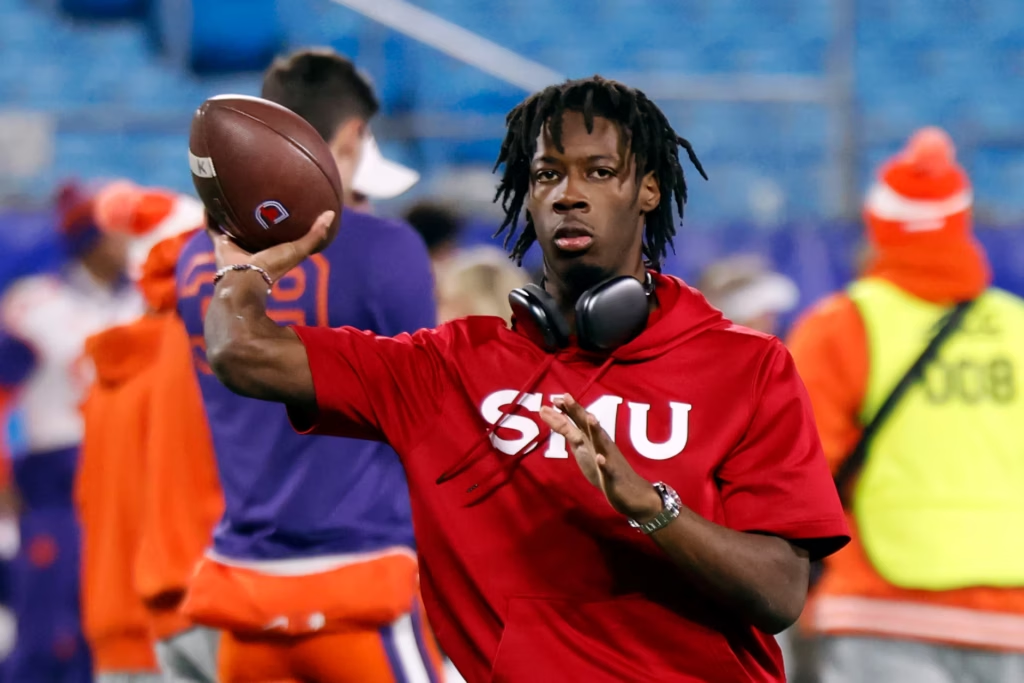
Kevin Jennings (SMU, No. 8)
Net Worth Overview: Kevin Jennings’ net worth is $1–$1.5 million, driven by his 2024 performance at SMU, leading the Mustangs to the ACC title game and CFP.
NIL Earnings: Jennings’ NIL valuation is $600,000 annually, per On3. Deals with a Dallas-based car dealership ($200,000–$300,000/year), a local sports retailer ($100,000–$150,000/year), and a fitness brand ($50,000–$100,000/year) total $1–$1.5 million since 2023, with $600,000–$900,000 net. College stipends add $50,000–$100,000.
Other Earnings: Jennings’ 500,000 Instagram followers generate $10,000–$20,000 per post, totaling $100,000–$200,000 yearly ($60,000–$120,000 net). ACC Network appearances add $50,000–$100,000. His $1–$1.5 million net worth includes $710,000–$1.12 million from NIL and media.
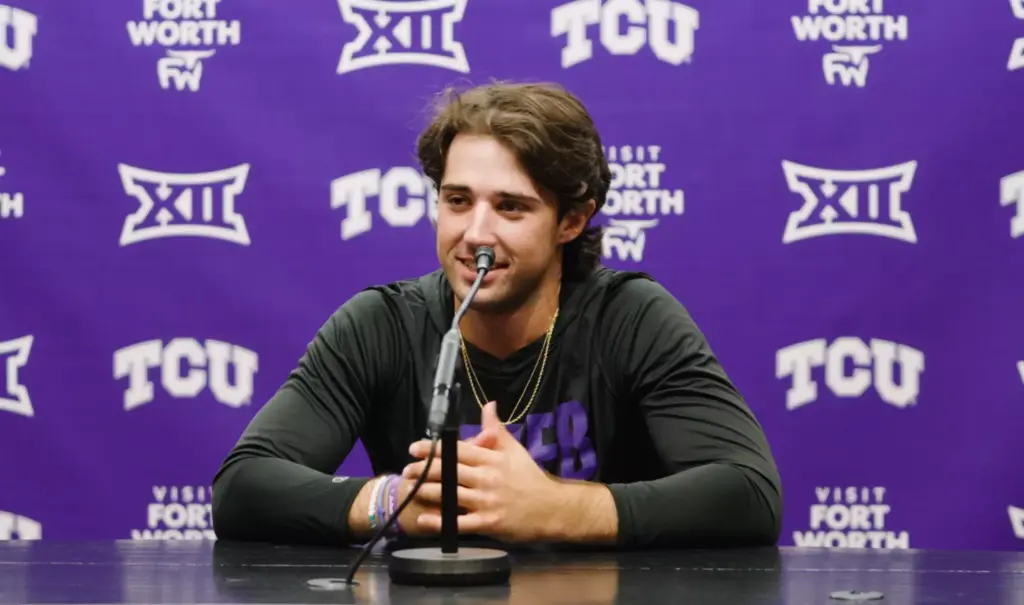
Josh Hoover (TCU, No. 9)
Net Worth Overview: Josh Hoover’s net worth is $1–$1.5 million, driven by his performance at TCU and growing NIL opportunities in the Big 12.
NIL Earnings: Hoover’s NIL valuation is $600,000 annually, per On3. Deals with a Fort Worth car dealership ($200,000–$300,000/year), a local sports retailer ($100,000–$150,000/year), and a fitness brand ($50,000–$100,000/year) total $1–$1.5 million since 2023, with $600,000–$900,000 net. College stipends add $50,000–$100,000.
Other Earnings: Hoover’s 500,000 Instagram followers generate $10,000–$20,000 per post, totaling $100,000–$200,000 yearly ($60,000–$120,000 net). Big 12 Network appearances add $50,000–$100,000. His $1–$1.5 million net worth includes $710,000–$1.12 million from NIL and media.
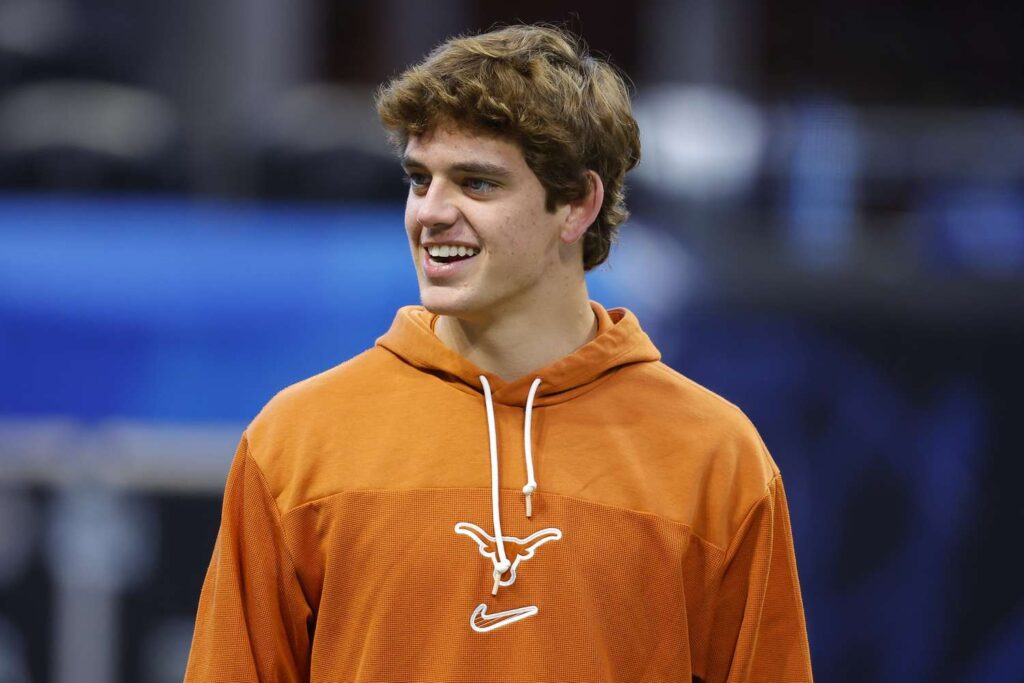
Arch Manning (Texas, No. 10)
Net Worth Overview: Arch Manning’s net worth is $10–$12 million, the highest in Tier 1, driven by his famous Manning family name and massive NIL deals, despite limited playing time.
NIL Earnings: Manning’s NIL valuation is $3.1 million annually, per On3, among the highest in college football. His $10 million deal with Texas’ collective, signed in 2023, includes Panini trading cards ($2 million/year), Nike ($1 million–$1.5 million/year), and a local Austin business ($500,000–$1 million/year). Total NIL earnings since 2023 are $9–$11 million, with $5.4–$6.6 million net after taxes and fees. College stipends add $50,000–$100,000.
Other Earnings: Manning’s 2.5 million Instagram followers generate $50,000–$100,000 per post, totaling $500,000–$1 million yearly ($300,000–$600,000 net). Appearances on ESPN and SEC Network add $100,000–$200,000. His $10–$12 million net worth includes $5.85–$7.9 million from NIL and media, with potential for $5 million more if Texas wins the national title in 2025.
Other Tiers: Financial Overview
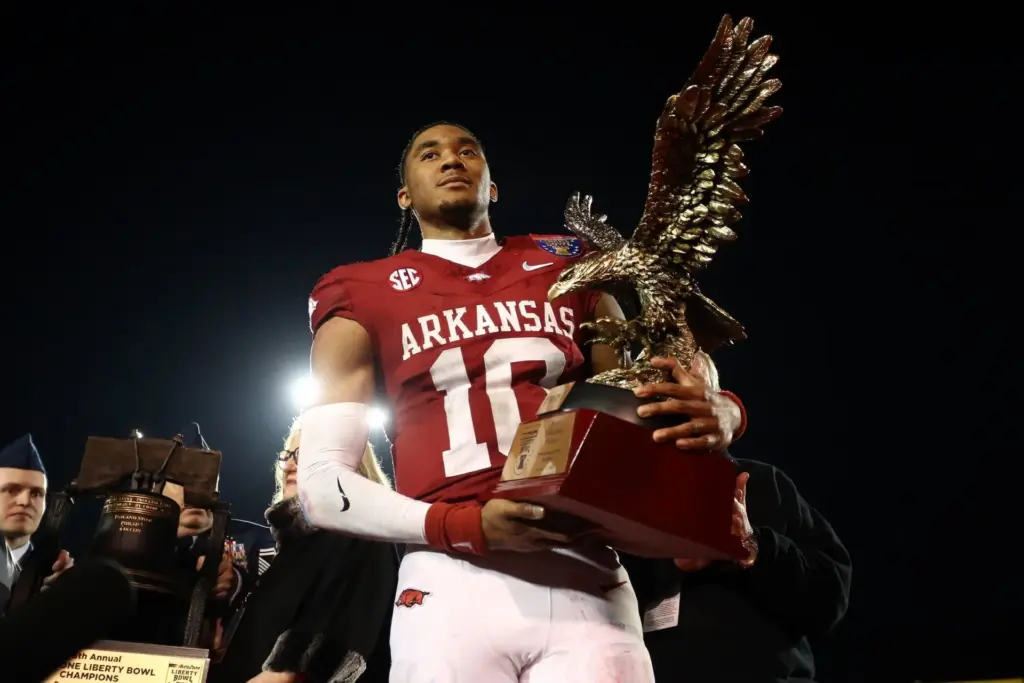
Tier 2 (No. 11–27): Includes quarterbacks like Taylen Green (Arkansas, No. 21) and Marcel Reed (Texas A&M, No. 26). Average NIL valuations range from $400,000–$700,000 annually, with deals from local businesses and national brands like Gatorade. Total earnings per player are $1–$2 million, with net worths of $500,000–$1.5 million. These players benefit from strong conference markets like the SEC and Big Ten.
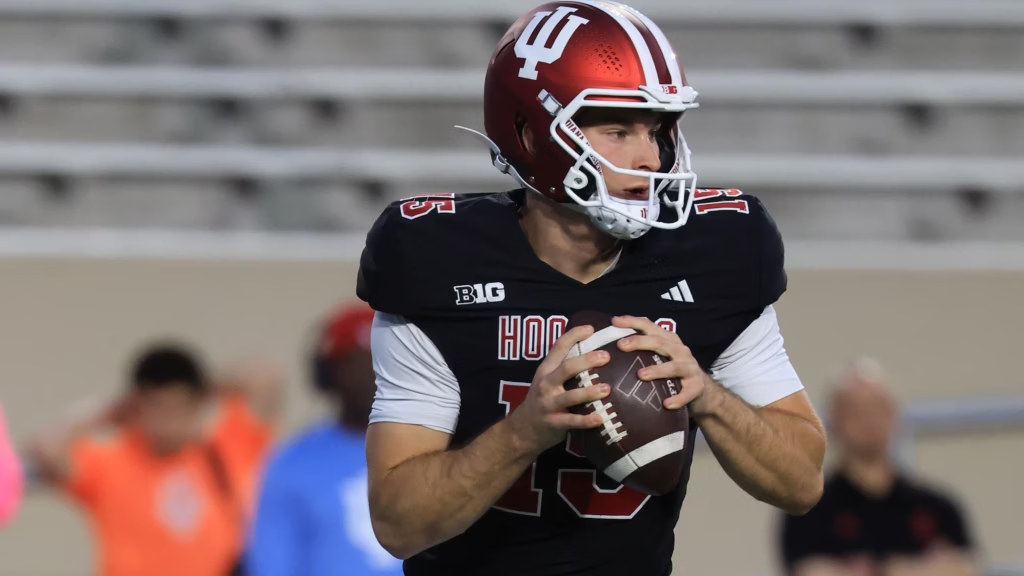
Tier 3 (No. 28–46): Features quarterbacks like Fernando Mendoza (Indiana, No. 30). NIL valuations average $300,000–$500,000, with total earnings of $500,000–$1 million and net worths of $300,000–$800,000. Smaller markets and less national exposure limit their financial opportunities compared to Tier 1.
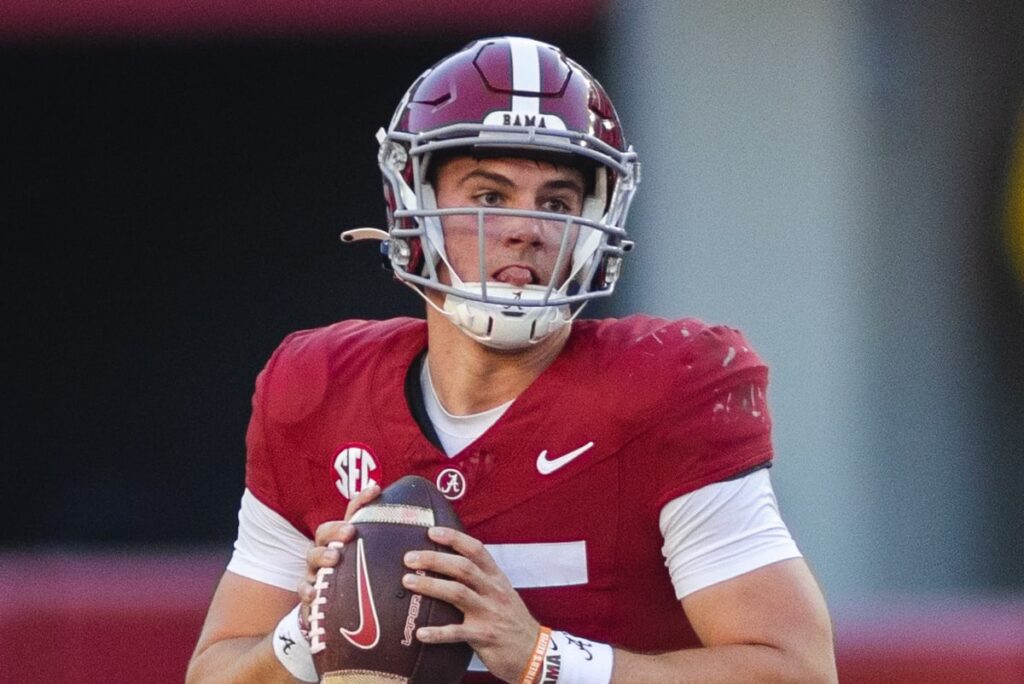
Tier 4 (No. 47–65): Includes Ty Simpson (Alabama, No. 47) and Gunner Stockton (Georgia, No. 48). NIL valuations range from $200,000–$400,000, with earnings of $400,000–$800,000 and net worths of $200,000–$600,000. Many are new starters with limited marketability.
Tier 5 (No. 66–84): Features quarterbacks with NIL valuations of $100,000–$300,000, with earnings of $200,000–$500,000 and net worths of $100,000–$400,000. These players rely on local deals and smaller brand partnerships.
Tier 6 (No. 85–110): Includes lesser-known quarterbacks with NIL valuations of $50,000–$200,000, earnings of $100,000–$300,000, and net worths of $50,000–$200,000. Limited exposure restricts their financial growth.
Tier 7 (No. 111–136): Features quarterbacks with minimal NIL activity, averaging $20,000–$100,000 in earnings and net worths of $20,000–$100,000. These players depend heavily on scholarships and minimal sponsorships.
NIL’s Transformative Impact
The NCAA’s 2021 NIL policy has revolutionized college football, creating a $1.17 billion annual market, per NCAA estimates, and enabling athletes to build significant wealth before turning pro. Tier 1 quarterbacks like Arch Manning, with a $10–$12 million net worth, benefit most, leveraging his family legacy to secure a $10 million Texas collective deal that funds family investments and real estate purchases.
Cade Klubnik’s $2–$3 million net worth, driven by Nike and Dr Pepper deals, supports his family’s financial stability, with Klubnik stating, “NIL lets me focus on football without worrying about money.” Garrett Nussmeier’s Raising Cane’s partnership funds his parents’ business, while LaNorris Sellers’ Adidas deal supports community initiatives in South Carolina.
Lower-tier quarterbacks, like those in Tier 7, earn modest $20,000–$100,000, but even these sums cover tuition and living expenses, reducing financial stress.NIL disparities are stark, with Tier 1 players averaging $600,000–$3.1 million annually compared to Tier 7’s $20,000–$100,000. This gap highlights the importance of marketability, conference affiliation, and on-field success.
The SEC dominates Tier 1 with four quarterbacks, reflecting its financial power, while smaller conferences like the Mountain West limit players like Haener. NIL has shifted power to athletes, with Manning’s Panini deal setting a precedent for high-value contracts. However, the unregulated NIL market raises concerns about equity, with some coaches arguing it distracts from team focus, per a 2025 ESPN report.
📈 Career or Performance Background
Cade Klubnik, born October 10, 2001, in Austin, Texas, was a five-star recruit who led Clemson to the 2024 CFP, throwing for 3,639 yards, 36 touchdowns, and six interceptions with a 63.4% completion rate. His Tier 1 ranking reflects his accuracy and mobility, making him a 2026 NFL Draft prospect.
Garrett Nussmeier, born February 7, 2002, in Lake Charles, Louisiana, threw for 4,052 yards and 29 touchdowns at LSU in 2024, earning No. 1 votes for his precision and leadership. LaNorris Sellers, born January 6, 2003, in Florence, South Carolina, threw for 2,543 yards, 18 touchdowns, and ran for 674 yards in 2024, showcasing dual-threat ability.
John Mateer, born April 15, 2002, in Little Elm, Texas, transferred to Oklahoma after amassing 3,139 passing yards and 826 rushing yards at Washington State in 2024. DJ Lagway, born August 22, 2003, in Willis, Texas, threw for 1,915 yards as a Florida freshman in 2024, earning praise for his arm strength.Drew Allar, born March 15, 2002, in Medina, Ohio, led Penn State to the 2024 CFP semifinals with 3,327 yards and 24 touchdowns.
Sam Leavitt, born June 12, 2003, in West Linn, Oregon, led Arizona State to the 2024 Big 12 title and CFP with 2,885 passing yards after transferring from Michigan State. Kevin Jennings, born January 14, 2003, in Dallas, Texas, threw for 3,245 yards and 23 touchdowns at SMU in 2024, leading the Mustangs to the ACC title game.
Josh Hoover, born March 10, 2002, in Rockwall, Texas, threw for 3,949 yards at TCU in 2024, establishing himself as a Big 12 standout. Arch Manning, born March 27, 2003, in New Orleans, threw 939 yards in limited 2024 action as Texas’ backup but carries immense hype due to his Manning family legacy, with coaches noting his potential as a starter in 2025.
🌟 Brand, Influence & Culture Impact
The Athletic’s 2025 quarterback tiers sparked heated debates on X, with posts like, “Klubnik at No. 1? Nussmeier and Manning are getting robbed!” Arch Manning’s $10 million NIL deal and 2.5 million Instagram followers dominate discussions, with fans hyping his potential, saying, “Manning’s gonna run the SEC in 2025.” Garrett Nussmeier and LaNorris Sellers trend for their SEC performances, with one X user noting, “Sellers’ strength is unreal—future NFL star!” Cade Klubnik’s leadership in Clemson’s 2024 CFP run earned praise, with ESPN analysts calling him “the total package.” The rankings highlight the SEC’s dominance, with five Tier 1 quarterbacks, boosting regional pride and viewership, per a 2025 Nielsen report showing a 15% increase in SEC game ratings. The $1.17 billion NIL market amplifies these players’ influence, with brands like Nike and Gatorade leveraging their social media reach to drive engagement.
Lower-tier quarterbacks, like those in Tier 7, struggle for visibility, with X posts noting, “Tier 7 guys need more love—NIL isn’t fair.” The cultural shift toward athlete branding, driven by NIL, has elevated stars like Manning and Nussmeier into national figures, with *Sports Illustrated* profiling Manning’s “unprecedented hype.” The rankings also spark debates about equity, with coaches on ESPN arguing that NIL disparities could disrupt team dynamics, while fans celebrate the financial empowerment of players like Sellers, who funds community projects through his deals.
📌 The Distinct Athlete Angle
The Athletic’s 2025 quarterback tiers reflect Distinct Athlete’s focus on the intersection of wealth and leadership in college sports. Tier 1 stars like Arch Manning ($10–$12 million net worth) and Cade Klubnik ($2–$3 million) exemplify how the $1.17 billion NIL market empowers athletes to build generational wealth before NFL careers.
The financial gap between Tier 1’s $1–$3.1 million annual valuations and Tier 7’s $20,000–$100,000 highlights inequities, urging collectives to support lower-tier players. The success of Nussmeier, Sellers, and others underscores the SEC’s financial dominance, setting a blueprint for other conferences. This NIL-driven era redefines college football, empowering athletes but challenging programs to balance competition and commerce.
Conclusion
The Athletic’s 2025 college football quarterback tiers, led by Cade Klubnik and featuring Arch Manning’s $10–$12 million net worth, highlight the financial revolution in college sports. NIL deals, ranging from $500,000 for Jake Haener to $3.1 million for Manning, have transformed athletes into multimillionaires, with the $1.17 billion NIL market driving unprecedented wealth.
Tier 1 stars like Garrett Nussmeier and LaNorris Sellers leverage their earnings for family and community support, while lower tiers face financial disparities. As college football evolves, these quarterbacks’ financial success shapes the sport’s future, redefining athlete empowerment nationwide.
Related Reads on Distinct Athlete
- UNRIVALED SIGNS JUJU WATKINS, FLAU’JAE JOHNSON TO NIL DEALS
- THE NEW NIL ERA: HOW BIG MONEY AND REVENUE-SHARING ARE CHANGING COLLEGE SPORTS
- BRIAN KELLY’S ON THE HOT SEAT: CAN LSU AFFORD TO FIRE HIM?
Join the Conversation
Do you think Cade Klubnik deserves the No. 1 spot, or is Arch Manning’s NIL wealth stealing the show? Follow us on Instagram, Facebook, and X @DistinctAthlete.

